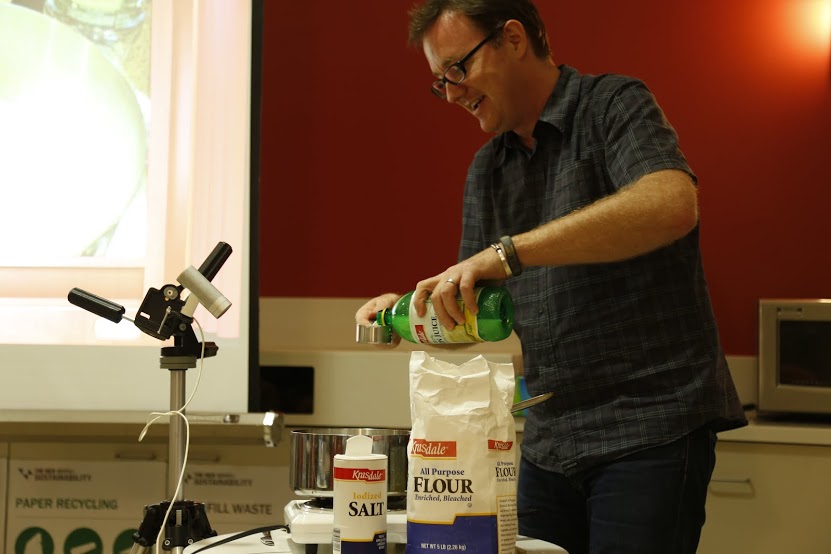
The next wave in digital journalism innovation
Heather Chaplin is an assistant professor of journalism at Eugene Lang College The New School for Liberal Arts and director of the Journalism + Design program, which Knight Foundation supports to advance media innovation. Photo: Students learn circuitry basics.
Not that long ago, the Sunday paper arriving on your doorstep might have been the most interesting thing to happen to you that day. Since then, the newspaper has moved online and into our pockets, and yet journalism’s problems aren’t solved.

Related Links
“WLRN strives to design a model of innovation to serve South Florida” by Mabel Domenech, WLRN, on Knight Blog (09/26/14)
“New Stanford d.school fellowship program will also share stories behind innovation” by Justin Ferrell and Emi Kolawole on Knight Blog (09/26/2014)
“The New School to launch new Journalism + Design program to advance innovation and experimentation in journalism” – Press release
People have access to so much interesting information every second of every day that neither journalism (or the entertainment industry, for that matter) has the market on interesting cornered anymore. Now we’re competing with new modes of communication no one could have dreamed of a decade ago.
It’s the attention economy, stupid. And attention is a scarce resource. How is journalism—as opposed to all the other kinds of media out there—going to continue claiming people’s attention let alone justify its demand for this attention?
The first wave of digital journalism innovation borrowed insights from computer science and engineering, helping us see the importance of data and building new tools to grapple with it.
The next wave should be design, and $250,000 from Knight Foundation will help us do that.
Using design to create better journalism
Design thinking is predicated on understanding the world as a set of systems. Designers—whether product designers, graphic designers, videogame designers or architects—understand that wholes are made of many interconnected parts; and they pay as much attention to those interconnections as the parts themselves. Armed with that understanding, they have developed methodologies for thriving and creating amid complex systems, and ways of imagining, experimenting and building that could help transform journalism.
Journalism exists in a media ecosystem that grows more complex by the minute. When we understand this system, and the people with whom we share it, we can start to create the journalism products of the future.
Human-centered journalism
Design starts with the person for whom you’re designing – a mindset that can help us approach journalism as the participatory activity it has become, and understand our “audience” in a whole new way. Human-centered journalism, inspired by design thinking, starts with listening and observing; discovering what people’s information needs are, where their problems lie. (“Empathizing” is what many designers call the first step in their process.) This means building real, trusting relationships to facilitate the modern reporting process, integrating feedback and iterating as we go.
With Knight Foundation’s support, we launched the Journalism + Design undergraduate degree program at The New School this fall to start exploring human-centered journalism. Designers teach alongside journalists; there are engagement editors in every class. We’re adding mentors, hangout sessions, hackathons, design sprints and workshops; as much will happen outside the classroom as in it. All students do real journalism, for real people, published via social media and our vibrant student news organization. We want to be a place for exploration and experimentation.
Going on the offensive
As journalists, we’ve long championed the spirit of critical thinking – the urge to break down and examine what we’re seeing and hearing, to highlight and publicize the world’s problems. We must never lose that; it’s what animates the journalistic enterprise to begin with. But design thinking can help us add something crucial and complementary: the constructive, entrepreneurial spirit that asks how we might build solutions – new journalistic models, and ways for journalism to play a problem-solving role in people’s lives. In the words of Herbert Simon, design is the “transformation from existing conditions into preferred ones.” Design thinking is an offensive skill. Isn’t it time for journalism to go on the offensive?
Recent Content
-
Journalismarticle ·
-
Journalismarticle ·
-
Journalismarticle ·


